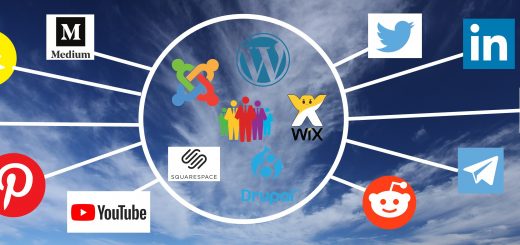Do You Really Need That Expensive Online Work Management System?

Shôn Ellerton, January 2017
Your business is not running as efficiently as it should:
- Processes are not being followed correctly;
- Emails are not being read and actioned;
- Staff are unsure who to contact in your organisation to get something done;
- An abundance of spreadsheets and databases are in existence but few know of their existence or how they are used;
- Work files are stored on local directories but nobody can find anything;
- Invoicing does not match with your client’s purchase orders;
- Inconsistent reporting and lack of data integrity with your client.
The above is a list of a few ailments which might very well prod the action of doing something about it. One common reaction would be to suggest implementing an ‘all singing and dancing’ online work management system (WMS). The basis here is that everyone in your organisation can have a tool at their fingertips to perform the tasks that they are required to do. However, before taking the plunge into implementing an online WMS, let us take an objective approach into assessing the need to do so.
Common Sense Prevails
The first three items in the list above certainly do not require the need for an online WMS; but rather the need to provide strong guidance to those working in your organisation regarding your company’s processes, policies, goals and ongoing career development. This entails strong leadership with an emphasis on team-bonding activities, incentive-approach work targets and focussing on completing deliverables on time. This is particularly challenging in those projects whereby teams are working in geographically-diverse situations or where projects are running in a matrix-type environment.
Implementing an online WMS can be very expensive; therefore, it would be prudent to ensure that your organisation’s projects have strong governance in place. With strong governance in place, it is possible that many of the abilities you want your online WMS to perform may not be necessary at all, thus saving costs in developing the tool by eliminating the features you do not need. Moreover, having ill-defined processes in place make it nearly impossible to bring your online WMS into fruition. I cannot state more strongly enough that processes and systems development must be in alignment. Once in alignment, your proposed ‘use cases’ that your online WMS will be required to service will be much easier to formulate and implement.
Should You Bring in the Management Consultants?
Your organisation may want to render the services of an external management consultant to assist in bringing around the right change required to improve your business efficiencies. Using external management consulting services can be a very effective way; however, it often pays dividends to first focus internally on your organisation using some of the common-sense tactics as explained in the previous section. The requirement to bring in a management consultant may not be necessary which of course brings in the additional benefit of having been spared the cost of its service and any deepening of mistrust between your employees and your organisation of having to use an external consultant to ‘sort things out’. In my experience, in every occasion a management consultant was brought in, the general feeling across the staff base is of unease and lack of security. Much of this can be reduced by communicating more openly across your staff by explaining the reasons of bringing in a management consultant. Furthermore, your management consultant’s expertise is to independently understand how your business can be improved without the need for those who employed its services to ‘get them to say what they want’. If your management consultant sees benefit in implementing an online WMS to improve the workings of your business, then it will make the necessary recommendations as to what that could be along with a list of alternative options including their return on investments.
When is an Online WMS Suitable or Not?
A reasonable statement to make is that it is easier to modify a smaller project-based tracking system (for example, a local database) than a global online WMS. It is also one of the most important statements to consider and it often ties in with what type of company the online WMS is being considered for.
Direct consumer-facing companies such as banks, mobile phone suppliers, airlines, department stores are generally best suited for an online WMS. The principal reason for this is that they are not chained to another client’s processes but rather have complete control of their own. Project-based services may benefit from an online WMS but this is very much dependent on the stability and future pipeline of work from your client(s). If you have multiple clients, your WMS will need to cater across all projects, each with potentially vastly differing methodologies and processes.
If your business caters for both large-scale single-entity projects (for example, the building of a hospital) and small-scale multiple-entity projects (for example, building a national network of water boreholes with smart metering), it is highly unlikely that a global online WMS will be able to cater for activities across the two types of projects effectively. For example, using an advanced scheduling tool such as Primavera P6 would be a valuable tool for the former type of project whereas a high-volume ‘ticketing-based’ system would be more suited for the latter.
In the above case, it could make more sense to restrict the scope of the online WMS to financial, supply and resource management functions alone in which the effect of any change to processes by your client are transparent (or at least with some minor modifications) to your WMS. Much of these functionalities are already available across a wide variety of third-party tools including SAP, JD Edwards and BST; therefore, it is questionable whether an online WMS should be implemented as, in most cases, this would probably need to tie in with one of these third-party tools in any case.
Consider the case of a company in which an online WMS has been implemented to serve across multiple projects with multiple clients. Also consider the case that the WMS has been designed to track task-based activities, for example, the acquisition of land to build a mobile cell tower. And again, consider that these projects require data exchange to and from their respective clients, each with their own differing naming and data conventions. The online WMS would need to be designed to cater for possible changes outside the company’s control. For example, a change in how a baseline is defined by the client may have a very interesting effect on the WMS. If any change is required to the WMS, it could be very costly and time-consuming as this would involve the usual gambit of CAB (change advisory board) approvals, viability assessments, SoW (scope of work) approvals, training, rollout of UAT (user acceptance testing) and final approvals for implementation. Remember that changes to any part of the WMS could have wide-impacting results to other projects if not designed correctly. All in all, if a company’s portfolio contains a large number of widely differing projects along with various clients, it is usually far more economical to relegate the responsibility of the managing task-level activities at project level and then rolling up the financials and supply management to corporate level.
There is the case where the client may request that an online WMS or other elaborate system be implemented so that the appropriate work can be carried out. For example, if your company was contracted out by a major national client to roll out a fibre communications network, you may need to implement such a system. It would be a very expensive exercise to design and implement a system only to find out that you do not have a sufficient amount of committed work from the client to make your return on investment positive.
The Failure of Delivering an Online WMS
Without being overly blunt, there is a high probability that new online work management systems will not be successful. There could be many reasons for this including complexity, cost and politics; however, I would like to highlight two specific reasons.
-
Lack of Project Consultation
The adage applies here: ‘If you don’t know what the use cases are, then you don’t know what to design for’. So very often, work management systems are designed ‘top-down’ without much in the way of technical consultation with the projects. A reasonably-large project may already have its own local WMS in place along with its own technical team of professionals who have built and maintained it. It could be as simple as a Microsoft Access database, or a two-tier Oracle/Windows Form application or something else. The importance here is that the project’s delivery teams are already using it. It is not uncommon for some degree of protectionism to occur between the Project and Corporate technical/IT teams; however, much of this can be alleviated by involving the technical leads of the Project during the planning and design of the WMS. Moreover, it is likely that the project’s technical team would view some of the proposed functionality of the WMS as highly beneficial and welcome it with open arms and offer their technical support. If little or no project consultation occurs, it is extremely unlikely that an effective online WMS can be implemented.
-
Poor Data Migration Plan
Having a poor data migration plan in place is a death knell to implementing a new online WMS. Data migration is not a trivial exercise and should not be dismissed as an afterthought activity. It is very dangerous to assume that data from various projects can simply be ‘mapped together’ without any serious repercussions. Unseen to most users is the world of primary keys, datatypes, table relationships, field lengths and all those wonderful little details that linger in the mind of a system designer. I have seen, firsthand, the experience of this when critically-important financial costcode structures were altered without consultation with the project’s technical IT team which developed the interface to connect to the previous financial system. Unfortunately, it proved not to be a simple mapping exercise and generated considerable chaos until the project’s system was realigned with the new financial system.
The other issue with data migration is what data to migrate. Another example I witnessed occurred during the development of a very slick and impressive work management system to assist in rolling out mobile base station sites. Once in place, it would remove the need to use the bewildering array of older systems in which very little was in sync with each other. The problem here was that old data would still reside in the older system whilst new project data would be introduced into the new WMS. Admittedly, there would be a vast amount of data to migrate, but it would, for want of a better term, force users to use the new WMS. What transpired was that the old systems reasserted themselves and the new WMS was shelved.
Conclusion
Whether to implement an online work management system to serve the needs of your company must be based on realistic return-on-investment analyses. As stated earlier, the development and implementation of new online work management systems can be very expensive and can be prone to failure if the level of consultation within your business is not sufficient. Strong team leadership skills, effective collaboration between teams, properly defined processes with effective governance in place can go a very long way towards gaining better efficiency within the business without the need to implement that fancy new online management system.






